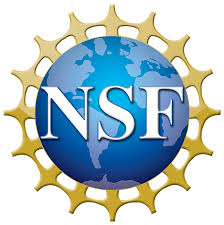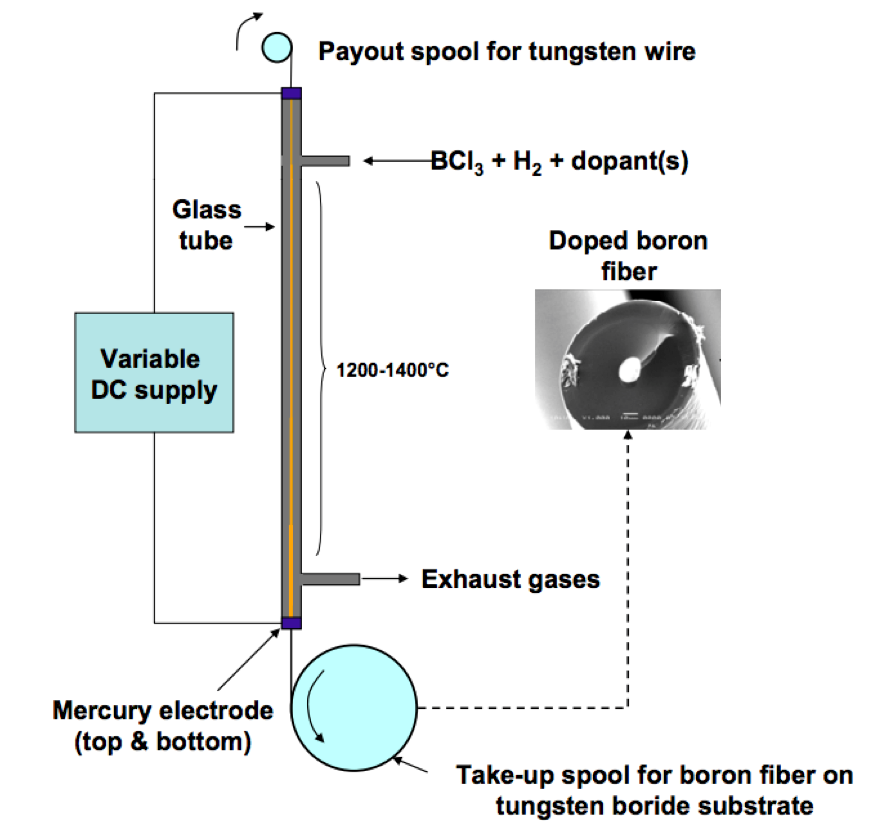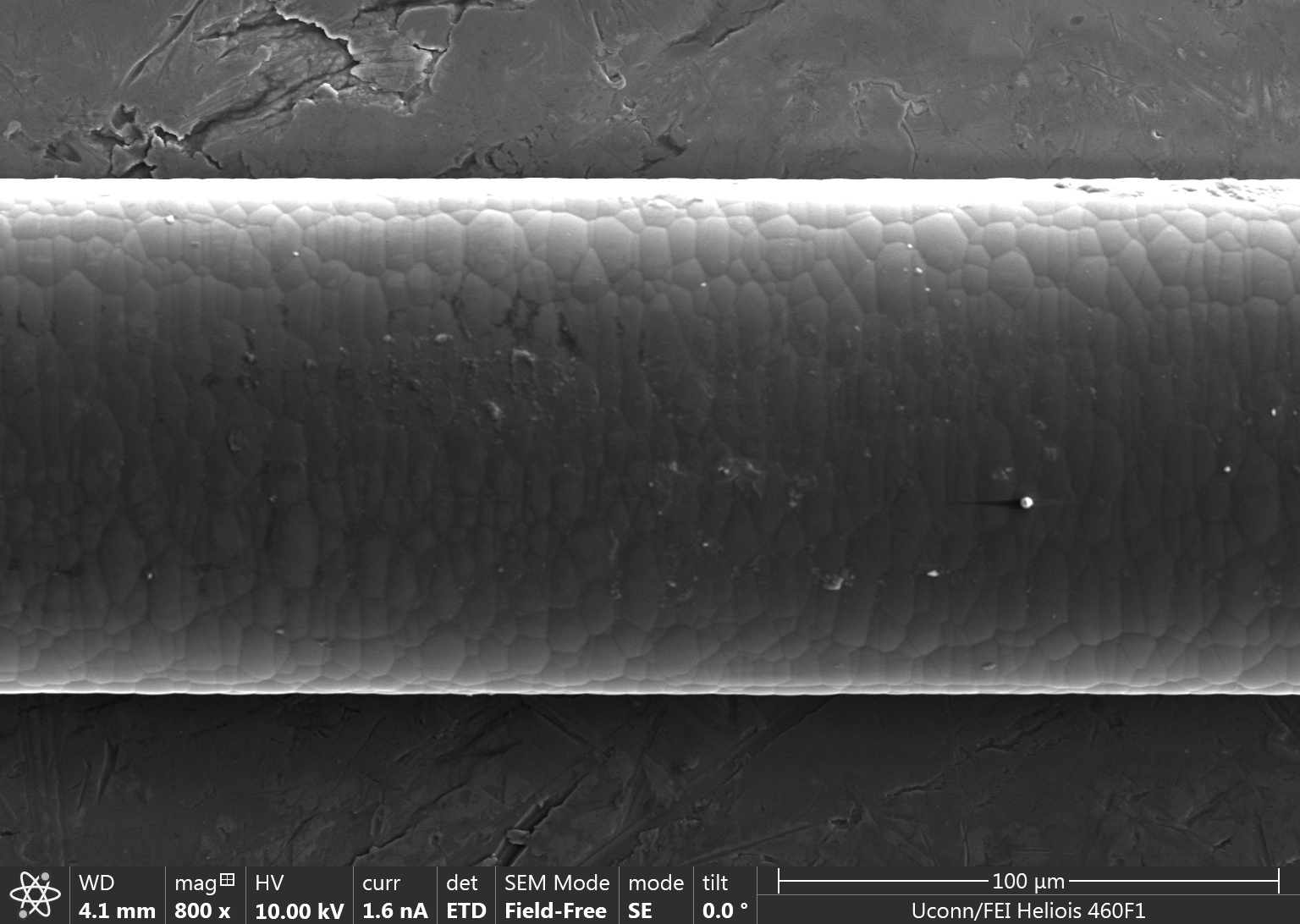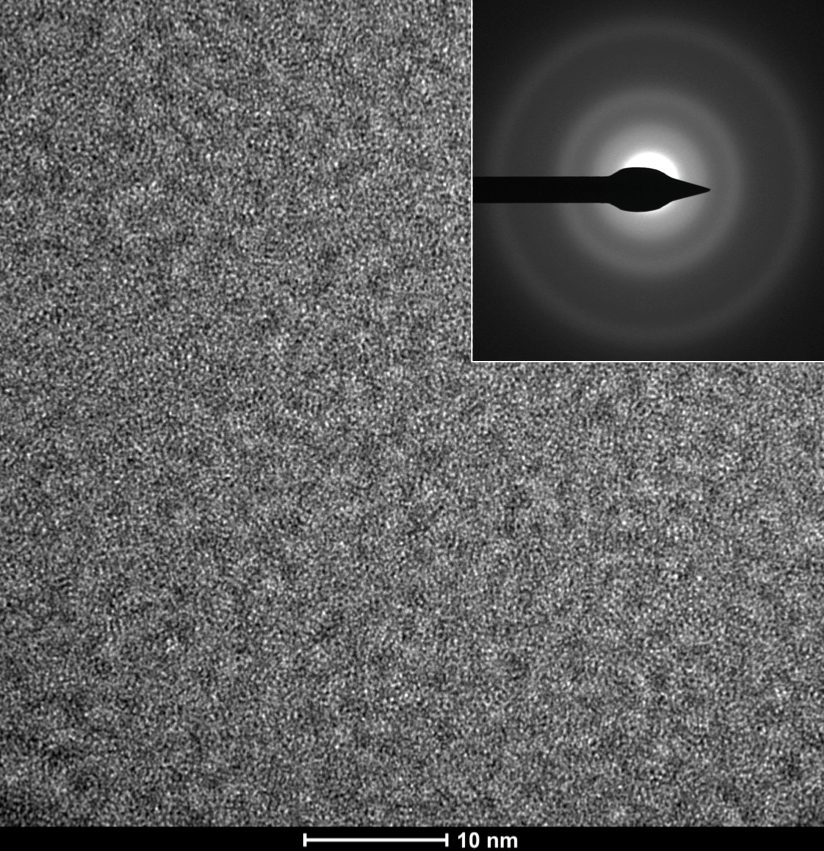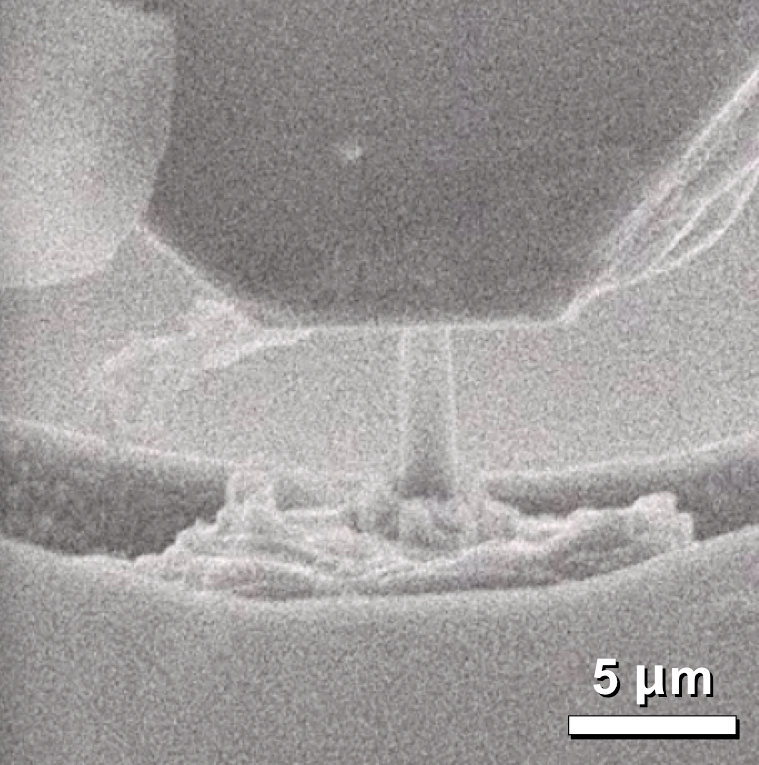(Sponsor: National Science Foundation)
Boron is the fifth element in the periodic table and the smallest metalloid element. Boron has been used as an additional element in metallic alloys or semiconductor devices, but it has not been widely used as itself. For example, once you google ‘mechanical properties of boron’, you will see plenty of works on boron-carbide, not boron! In practice, elemental boron is often deposited on tungsten wire, and it is possible to obtain the core shell structure (core = tungsten boride, shell = amorphous boron). This composite wire has been used as a reinforcement in composites for military and aerospace applications. With the reaction with Mg, amorphous boron turns into crystalline magnesium boride (MgB2), which is a high temperature superconductor. In this way, it is possible to make a superconducting wire. Anyway, mechanical properties of amorphous boron has never been characterized carefully due to its small thickness. Hollow amorphous boron wire (after removing tungsten boride core) was tested a while ago, but this wire measurement should underestimate its mechanical properties due to defects in a long wire.
The thickness wire is about 100 micrometers, which is large enough to perform micropillar compression/tension test. So, our group for the first time is trying to characterize its (nearly) true mechanical properties. Due to its covalent bonding, ultra-high strength is expected. Its unique amorphous structure will also play a role in deformation and fracture processes. Enjoy this metalloid glass (not metallic glass)!
<Amorphous Boron Fiber Fabrication at Specialty Materials, inc.>
(Caution: the surface morphologies are not grain boundaries!)
(Diffraction patterns show the three haze rings, which indicates the short-range ordering (mysterious!).)
< in-situ Micropillar compression of amorphous boron micropillar >
Acknowledgement: Amorphous boron fibers were kindly provided by Specialty Materials, inc.
